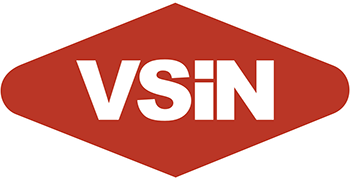MLB Home-Field Advantage
We are getting to the point in the MLB season where saying “it’s early” isn’t carrying nearly as much weight. Player stats and sample sizes definitely need to mature a lot more before we can make some determinations about their future performances, but there is a development going on in Major League Baseball that truly caught my attention. It seems like MLB Home-Field Advantage might have increased.
Home-field advantage is prevalent in every sport, but it does feel like it can be manipulated and exploited more in baseball than any other sport. Each ballpark has unique dynamics, wind conditions, and other quirks and intricacies that front offices can use in terms of roster construction. By no means is it foolproof, but 81 games in one location leads to a lot more reliable data than anywhere from one to three series in a road venue.
Is it possible that MLB teams have had some kind of revelation here in 2025 or are we just looking at some early-season variance and a trend that isn’t actually true?
MLB Home Team Records
There are several stats in baseball that are pretty sticky year-over-year. One that seems to be pretty reliable is road winning percentage. I’m not going to include the COVID year of 2020, but if we look at the last five full seasons in MLB, here are the road winning percentages.
2024: .478
2023: .479
2022: .467
2021: .461
2019: .471
That is a pretty sticky range. And I would argue that the 2021 season as an outlier makes sense because of the compacted schedule of 2020 and some of the carryover from that season into the next one.
Now, one fairly recent development is that every ballpark has a humidor. The league was trying to standardize the baseballs in some way. It started with places like Coors Field, Chase Field, and Fenway Park, where offensive numbers were significantly higher than other venues, and also in domed stadiums. By 2022, every stadium was required to have a humidor.
I picked out some random years to see if that 47% range was sticky back then too.
2014: .470
2010: .441
2007: .458
2002: .458
My guess is that as teams embraced analytics, employed more Ivy Leaguers, and also got better data with advanced technology, they found more effective ways to combat home-field advantage and level the playing field a little bit. That is just my theory, but the game is evolving faster than ever before. The humidor may be another factor. So, road teams are actually improving on the whole from where they used to be.
Nevertheless, we are about three and a half weeks into the season and we are nowhere near 47% and that is something that I was hoping to dive into further. After road teams went 0-8 on Monday April 21, I felt like it was time to explore this more.
2025: 131-206 (.389)
Road teams are winning under 40% of the time. Home teams have collectively posted a 3.54 ERA, which should regress as the season moves forward. League-wide pitching stats at home on FanGraphs date back to 2015 in their Splits Leaderboards section and 3.54 is easily the best mark. The previous high was in 2015 at 3.77. So, regression is likely to come and maybe road teams will have some more wins going forward.
There are some teams off to abominable starts on the road. The Rockies and White Sox are a combined 2-21 away from home, so they are shouldering a big load in this department, but that was expected. However, the Braves were expected to be a very good team and they are 2-11 on the road. The Royals and Twins are a combined 6-20 with identical 3-10 road records.
From the base-level data, I don’t see much. The walk rate for road pitchers is the second-highest dating back to 2015, but not outrageously out of the normal range. The K% at its lowest point since 2017, but not terribly off the usual pace. Similarly, I don’t see much K% or BB% noise from home pitchers. And the control stats can be a little bit less telling early in the season as pitchers shake off rust and things like that.
In terms of batted ball metrics (average exit velocity, average distance, average launch angle), nothing is dramatically out of whack for hitters. This is actually the highest year for road average exit velo at 89.3 mph in the Statcast era, which dates back to 2015. Batted ball distance is at its lowest point, though that may simply be the weather and may normalize as it warms up. That is one of the issues with comparing a smaller sample size to the full season.
So I added another variable to my Baseball Savant query to only look at March/April. It brought some of the recent seasons’ average batted ball distance closer to what we’re seeing in 2025.
Nothing really stands out about the home batted ball metrics either.
The conclusion is that I don’t really have a conclusion. Entering play on April 22, home pitchers had allowed 361 HR and road pitchers had allowed 360. So, it’s not that. Home teams do have a much better K% (23.6% to 21.4%) and BB% (8.8% to 9.4%), but that’s a pretty common occurrence annually.
It is something that I will be following closely for the next little while to see if it normalizes or not. Teams like the Rockies and White Sox aren’t going to get markedly better, so they may still put a big dent in this number, but they were 42-120 on the road last season and the league’s teams won nearly 48% of their road games.
And honestly, if we eliminate those two disasters, the other 28 teams combined for a .494 win percentage on the road. If we eliminate the Rockies and White Sox this season, the rest of the league has just a .411 win percentage on the road.
It may be something. It may be nothing. It may be an early-season quirk or a sign of something more. I guess we’ll just have to wait and see how it plays out and whether or not it has any actionable betting angle attached to it.






